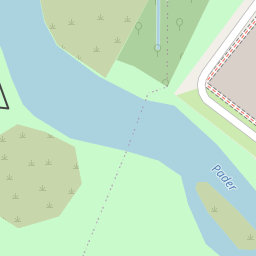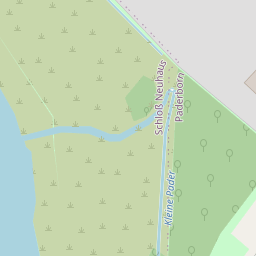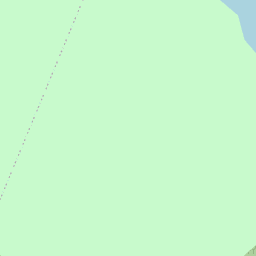Interactive Model Modification, Synchronized Analysis and 3D Visualization of Parallel Discrete Event Simulation (AVIPASIA)
Key Facts
- Grant Number:
- 32439114
- Project type:
- Sonstiger Zweck
- Project duration:
- 01/2007 - 12/2010
- Funded by:
- Deutsche Forschungsgemeinschaft (DFG)
More Information
Contact
If you have any questions about this project, contact us!
Dr. Matthias Fischer
Theory of Distributed Systems
Wissenschaftlicher Mitarbeiter

Results
Zur digitalen Planungsabsicherung von Fertigungssystemen und zum besseren Prozessverständnis werden Materialflusssimulationen eingesetzt, die zu besseren Prozessverständnis zur Analyse von Abläufen oftmals durch eine interaktive Visualisierung in einem 3D- Walkthough-System unterstützt werden. Die Materialflusssimulation ist eine diskrete ereignisorientierte Simulation und das simulierte Modell beinhaltet stochastische Einflüsse, weil wesentliche Eingabedaten, wie Bearbeitungs- und Ausfallzeiten durch Zufallsverteilungen modelliert sind. Das Verhalten des Modells ist stark abhängig von den aus den Verteilungen ermittelten Zufallszahlen, die im schlechtesten Fall das Verhalten wesentlich in Bezug zum Untersuchungsziel beeinflussen können. Ziel dieses Projektes war die Abweichungen zwischen den verschiedenen Simulationsläufen bereits während der Ausführung der Simulationsläufe zu berechnen und in der Visualisierung anzuzeigen. Außerdem sollten Änderungen am Simulationsmodell bereits zur Laufzeit vorgenommen werden, um Fehler zu korrigieren und um die Auswirkungen dieser Manipulationen zu beobachten. Dazu wurden alle Simulationsläufe eines Experiments parallel und synchronisiert berechnet und die unterschiedlichen 3D-Darstellungen der Simulationen in dem Bild eines einzelnen Visualisierungswerkzeugs zusammengeführt. Auf diese Weise kann der Benutzer das typische Verhalten des untersuchten Systems bereits während der Berechnung der Simulation beobachten und ist nicht auf eine Auswertung nach Durchführung sequentieller Simulationsläufe angewiesen um beurteilen zu können, ob das in einem Lauf gesehene Verhalten auch typisch ist. Um die Auswirkungen von Modellanpassungen direkt beobachten zu können, wurden veränderte einzelne oder ganze Mengen an Simulationsläufen automatisch geändert und parallel zu den Originalen ausgeführt und visualisiert. Um diese Ziele zu erfüllen, wurden sehr viele Simulationen gleichzeitig berechnet und visualisiert. Um den erhöhten Rechenleistungsbedarf zu erfüllen, wurden die Simulationen und deren Visualisierung parallel in einem PC-Cluster berechnet. Für die Darstellung der Vielzahl an Simulationsläufe in einem einzelnen Bild mussten neue Visualisierungsmethoden entwickelt werden. Zudem mussten neue Renderingmethoden und Algorithmen entwickelt werden, um Bilder von komplexen, dreidimensionalen Szenen in einem parallelen Echtzeit-Renderingsystem zu berechnen. Für das automatische Erstellen neuer Simulationsläufe musste eine Methode entwickelt werden, um eine Simulation mit ihren Zuständen zu klonen, Modelländerungen automatisch vorzunehmen und die neuen Simulationen parallel und synchron zu den bestehenden auszuführen zu können.
Projektbezogene Publikationen (Auswahl)
Interactive refinement of a material flow simulation model by comparing multiple simulation runs in one 3D environment. In European Simulation and Modelling Conference (ESM 2007), pages 499–505. EUROSIS, October 2007
Matthias Fischer, Christoph Laroque, Daniel Huber, Jens Krokowski, Bengt Mueck, Michael Kortenjan, Mark Aufenanger, and Wilhelm Dangelmaier
A system for aggregated visualization of multiple parallel discrete event simulations. In International Symposium on Advances in Parallel and Distributed Computing Techniques (APDCT 08) in conjunction with ISPA 2008, pages 587–593. IEEE Computer Society Press, December 2008
Tim Süß, Matthias Fischer, Daniel Huber, Christoph Laroque, and Wilhelm Dangelmaier
Aggregated 3D-visualization of a distributed simulation experiment of a queuing system. In S. J. Mason, R. Hill, L. Moench, and O. Rose, editors, Winter Simulation Conference (WSC 08), pages 2012 – 2020. IEEE, Omnipress, 2008
Wilhelm Dangelmaier, Matthias Fischer, Daniel Huber, Christoph Laroque, and Tim Süß
Dynamic control of animation schemes for the efficient 3D-visualization of material flow simulations. In Industrial Simulation Conference (ISC 2008), pages 306–310. EUROSIS, EUROSIS-ETI, June 2008
Wilhelm Dangelmaier, Benjamin Eikel, Matthias Fischer, and Christoph Laroque
Concepts for model verification and validation during simulation runtime. In European Simulation and Modelling Conference (ESM 09), pages 49–53. EUROSIS, EUROSIS-ETI, October 2009
Wilhelm Dangelmaier, Robin Delius, Christoph Laroque, and Matthias Fischer
Asynchronous parallel reliefboard computation for scene object approximation. In Eurographics Symposium on Parallel Graphics and Visualization (EGPGV), Eurographics Symposium on Parallel Graphics and Visualization, pages 43–51. Eurographics Association, May 2010
Tim Süß, Claudius Jähn, and Matthias Fischer
Evaluation of a c-load-collisionprotocol for load-balancing in interactive environments. In IEEE 5th International Conference on Networking, Architecture, and Storage (NAS 10), pages 448–456. IEEE Computer Society Press, July 2010
Tim Süß, Timo Wiesemann, and Matthias Fischer
Approximative occlusion culling using the hull tree. In Proceedings of Graphics Interface 2011, pages 79–86. Canadian Human-Computer Communications Society, May 2011
Tim Süß, Clemens Koch, Claudius Jähn, and Matthias Fischer
Automated 3D-motion planning for ramps and stairs in intralogistics material flow simulations. In Proceedings of the 2010 Winter Simulation Conference (WSC 2010), pages 1648 – 1660. IEEE, Omnipress, December 2010
Matthias Fischer, Hendrik Renken, Christoph Laroque, Guido Schaumann, and Wilhelm Dangelmaier






















